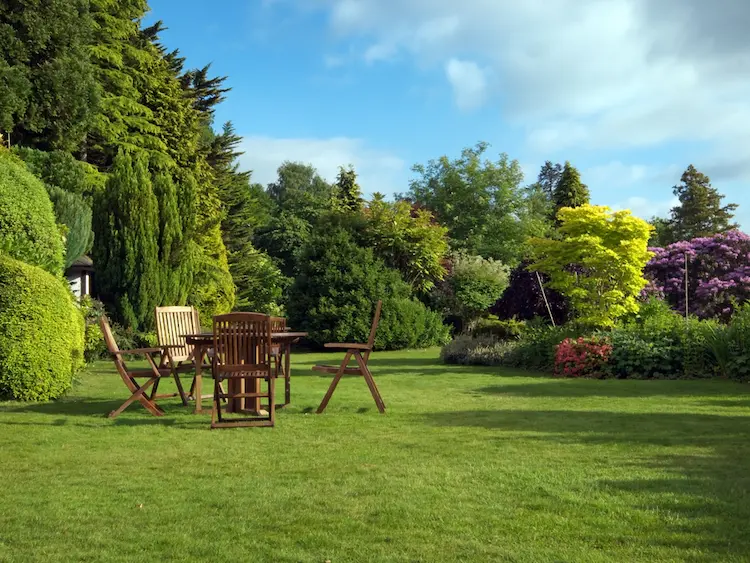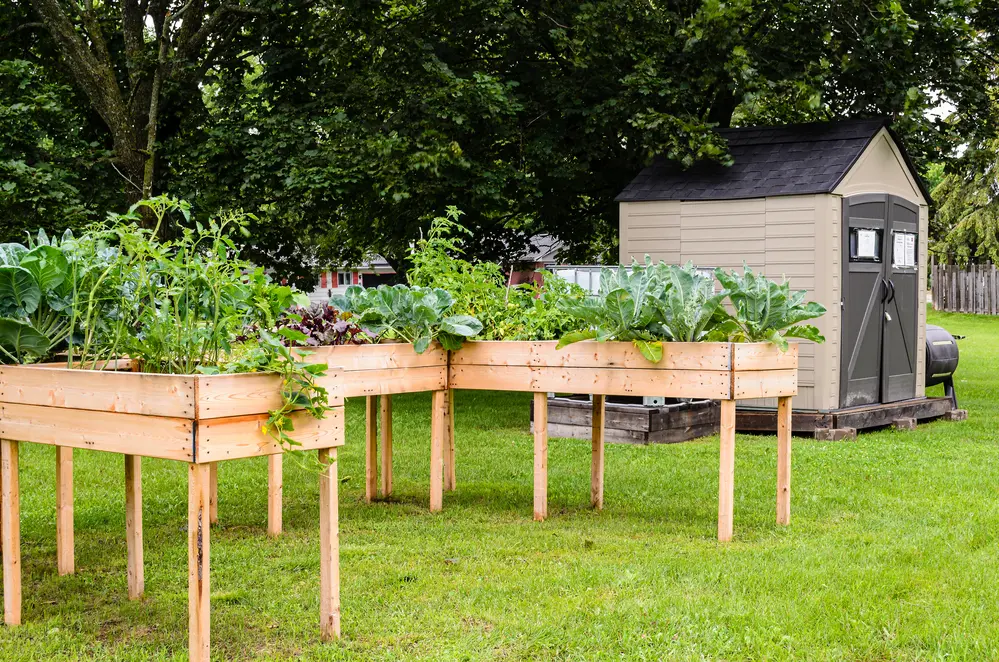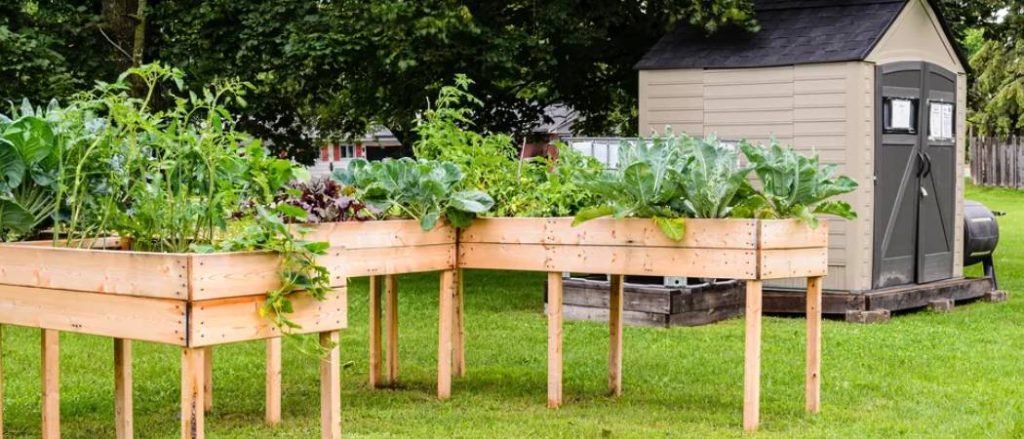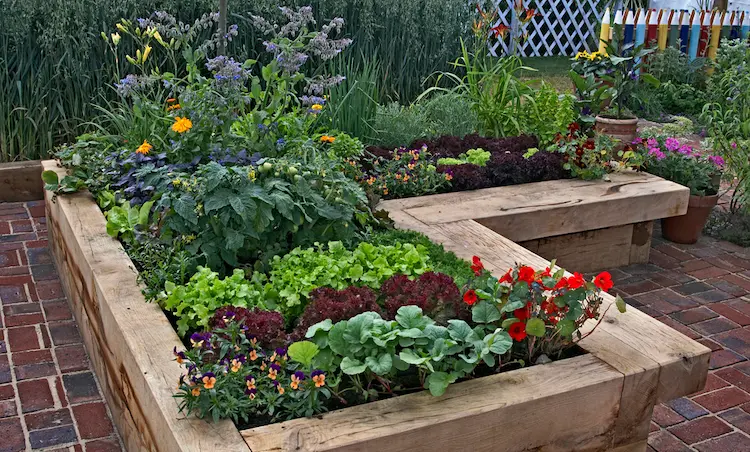Gardening is a therapeutic activity that provides a great sense of satisfaction and relaxation for anyone who has a passion for nurturing plants. However, gardening can be a challenging task for individuals with limited mobility.
This is where accessible raised garden beds come into play, an excellent option to make gardens truly inclusive, allowing individuals using wheelchairs to enjoy this rewarding hobby.
These accessible raised garden beds bring the garden to the gardener, making the joy of cultivating plants a reality for everyone.

What are Wheelchair Accessible Raised Garden Beds?
Wheelchair accessible raised garden beds are specially designed garden structures that elevate the planting area for easy access by wheelchair users.
Unlike the traditional garden beds that are at ground level, these raised garden beds are built at a height that makes them easily accessible from a seated position. This ensures that wheelchair users can reach all areas of the bed without stretching or bending.
The key to creating these raised beds is to design them with the right height and width for accessibility. They should be high enough to allow a wheelchair user to reach the soil and plants comfortably and wide enough to provide ample space for various plants without crowding.
Essentially, accessible raised garden beds create a more inclusive environment for gardening.
Benefits of Wheelchair Accessible Raised Garden Beds
Wheelchair accessible raised garden beds not only provide an excellent option for those with limited mobility to engage in gardening but they also offer several other benefits.
Engaging in gardening is a rewarding physical activity that promotes mental health. For wheelchair users, tending to a raised bed can provide a sense of accomplishment and an outlet for stress relief.
Gardening can be a sensory delight, offering a multitude of textures, colors, and scents. A sensory garden can be created in an accessible raised garden bed, providing the opportunity for exploration and enjoyment.
In addition, these raised garden beds provide easy reach to the plants, preventing strain and injury.
Lastly, wheelchair accessible raised garden beds offer easy maintenance compared to traditional gardens. They are designed to be ADA compliant, which means they are structured for ease and safety, making tasks like watering, weeding, and harvesting much easier.
Indeed, with accessible raised garden beds, every individual, regardless of their physical capabilities, can enjoy the art of gardening.

Choosing the Right Materials for Your Wheelchair Accessible Raised Garden Beds
Choosing the right material for your accessible raised garden beds is crucial for durability and functionality.
Common materials include wood, metal, and plastic. Wood, such as cedar or redwood, is a popular choice due to its natural resistance to rot and insects, and it blends beautifully into the garden environment. Metal raised beds are typically more durable and can provide a sleek, modern aesthetic.
Plastic beds are generally less expensive and lightweight, making them easy to move and maintain. Consider your garden’s location, aesthetics, and budget when deciding on the material for your garden beds.
Designing Your Wheelchair Accessible Raised Garden Bed
Designing an accessible raised garden bed requires some strategic planning. Standard rectangular raised beds are common, but U-shaped designs can be more accessible as they allow the gardener to reach all plants without having to stretch across a large width.
When considering height, a wheelchair accessible garden bed should ideally be 2-3 feet high to provide easy reach from a seated position. In terms of width, aim for 3-4 feet across to ensure plants at the center are within reach.
Also, consider positioning your garden bed for optimal sunlight and water access. Most vegetables and flowers require full direct sunlight for at least 6-8 hours each day, so a sunny location is ideal.
If you plan to include a water feature or irrigation system, proximity to a water source is also important.

Step-by-Step Guide to Building a Wheelchair Accessible Raised Garden Bed
Now, let’s get into the process of creating your wheelchair accessible raised garden bed.
Choose the location: Your garden bed should be placed in a spot that receives at least 6-8 hours of sunlight each day. The location should also be easily accessible for the wheelchair user.
Select the right materials: As discussed earlier, select the right material for your garden bed based on your budget and preference.
Design your garden bed: Plan out the size and shape of your bed. The recommended width is about 3-4 feet, and height is about 2-3 feet for wheelchair accessibility.
Construct the garden bed: Cut your chosen material to fit your design and assemble using screws or brackets to hold the pieces together. Ensure the structure is sturdy and safe.
Fill your garden bed: Add a mix of potting soil and compost to fill your raised bed. The soil should be rich and well-draining to support plant growth.
Plant your garden: Finally, plant your chosen vegetables, flowers, or herbs, and watch your garden thrive.
Remember, safety is paramount when constructing your garden bed. Always use the correct tools and safety equipment and seek help for the construction phase if necessary. Enjoy the process of creating your wheelchair accessible raised garden bed and reaping the benefits of your hard work.
Planting and Maintaining Your Wheelchair Accessible Raised Garden Bed
Once you’ve created your raised bed, the next step is to fill it with plants. For wheelchair accessible raised garden beds, consider choosing compact yet rewarding plants. Herbs, for example, are an excellent option because they are small, easy to care for, and can be used in the kitchen.
Likewise, vegetables such as lettuce, spinach, and radishes work well in raised beds due to their shallow root systems.
Maintaining your garden involves regular watering, weeding, and harvesting. The beauty of raised garden beds is they require less weeding than in-ground gardens. Additionally, consider incorporating a drip irrigation system for easier watering.
Remember, gardening is a process of nurturing plants and watching them grow. Enjoy every moment of it.

Expert Tips for Wheelchair Accessible Raised Garden Beds
Experts in accessible gardening have invaluable insights to offer. Firstly, consider incorporating ADA compliant garden tools into your setup. These tools are specially designed to make gardening more comfortable for individuals with limited mobility.
A garden tool with a longer handle can be beneficial to address the challenge of reaching across the bed. Moreover, self-watering raised garden beds can alleviate the need for frequent watering.
Lastly, sensory gardens are an interesting aspect to consider. Incorporating plants with varying textures, fragrances, and colors can provide a more immersive gardening experience for wheelchair users.
Conclusion
Creating a wheelchair accessible raised garden bed is more than just a gardening project; it’s a means to empower, providing easy access to a therapeutic and rewarding hobby. So, embark on this journey and reap the benefits of connecting with nature right in your backyard.
FAQs
How to build a raised garden bed that is wheelchair accessible?
To build a wheelchair accessible raised garden bed, choose a sunny, flat location. Select sturdy materials like wood or metal, and build a frame with a height of 24″-36″. The design can range from a rectangular to a U-shaped bed. Fill it with quality potting soil and ensure safety features like smooth edges.
What size garden bed is wheelchair accessible?
An accessible garden bed should not exceed 24″ in width if accessed from one side or 48″ if accessed from both sides. The length can be flexible, considering the available space and smooth wheelchair movement.
What height should a wheelchair raised garden bed be?
The height of a wheelchair accessible raised garden bed should typically range between 24″ to 36″. The exact height depends on the individual gardener’s comfort and reach.
How do I make my garden wheelchair accessible?
To make your garden wheelchair accessible, create wide, hard-surfaced pathways, opt for compact plant varieties, install raised beds or containers at an appropriate height, and provide shaded resting areas. Consider using adaptive gardening tools designed for people with limited mobility.


